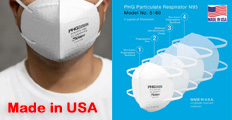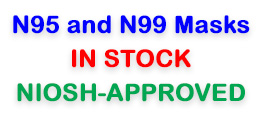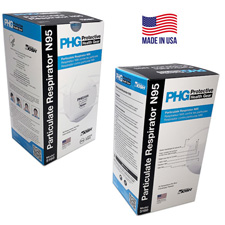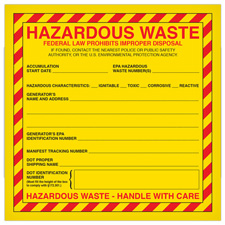



Find all of your laboratory and workplace safety supplies at Safety Emporium!
 Saline |
 Glossary Index |
 Sclera |
| MSDS Topics |
Free Sites | FAQ's | Regulations | Glossary | Software | Suppliers |
| Books | Forum | Poll | Fun stuff | Quiz | Store | |
| Understand your MSDS with the MS-Demystifier | Search ALL our MSDS info | |||||
The U.S. Superfund Amendments and Reauthorization Act, SARA is an amendment and reauthorization of CERCLA, the Comprehensive Environmental Response, Compensation & Liability Act (CERCLA) of 1980, better known as the SuperFund Act.
Both CERCLA and SARA have the goals of identifying, remediating and preventing the release of hazardous substances to the environment.

Get your PPE such as made in USA NIOSH-approved N95 masks from Safety Emporium.
SARA not only extended the life of CERCLA, but made several important changes to provide new tools for enforcement, remedies, funding, and both state and individual input. SARA also resulted in a revision of the U.S. EPA's (Environmental Protection Agency ) Hazard Ranking System to assess the degree of hazard to humans and the environment.
The Emergency Planning and Community Right-To-Know Act (EPCRA), also known as the Community Right-To-Know Law or Title III of SARA, provides specific plans for preparing for, preventing, and responding to the release of over 600 chemicals listed in the Toxics Release Inventory.
In 2002, the Bush administration decided to shift the funding of SARA from the chemical and petroleum industries to the taxpayers.
On December 30, 2009, the US EPA issued an Advanced Notice of Proposed Rulemaking concerning Superfund financial responsibility which would require that classes of facilities maintain financial responsibility consistent with the degree and duration of risk associated with the production, transportation, treatment, storage or disposal of hazardous substances. While not restoring the old funding mechanism, this proposed rule would reduce the likelihood of a major hazardous materials operator going bankrupt and leaving taxpayers to pay for the cleanup. Little movement took place through 2016. Unsurprisingly, in 2019 and 2020, the Trump administration signed rules to NOT impose the proposed financial responsibility requirements across these industries.
NOTE: We may collect a share of sales or other compensation from the links in the following list:

Get your hazardous waste labels from Safety Emporium.
SARA data may appear in Section 14 (Regulatory information) of the Safety Data Sheet for certain materials; however there is not requirement for the author of the SDS to do so. Any release of one or more of the roughly 800 CERCLA or 360 EPCRA hazardous substances that equals or exceeds a reportable quantity (RQ) must be reported to the National Response Center (NRC).
RQs are adjusted to one of five levels: 1, 10, 100, 1,000, or 5,000 pounds. EPA bases adjustments to the RQs on the intrinsic characteristics of each hazardous substance, such as the aquatic toxicity, acute and chronic toxicity, ignitability, reactivity, and potential carcinogenicity. An RQ value is established for each of these characteristics of a hazardous substance, with the most stringent RQ value (i.e., the lowest quantity) becoming the final RQ or reporting trigger for that hazardous substance.
See also: ATSDR, CERCLA, EPCRA, RCRA, TRI.
Additional definitions from Google and Onelook.
Entry last updated: Sunday, January 15, 2023. This page is copyright 2000-2025 by ILPI. Unauthorized duplication or posting on other web sites is expressly prohibited. Send suggestions, comments, and new entry desires (include the URL if applicable) to us by email.
Disclaimer: The information contained herein is believed to be true and accurate, however ILPI makes no guarantees concerning the veracity of any statement. Use of any information on this page is at the reader's own risk. ILPI strongly encourages the reader to consult the appropriate local, state and federal agencies concerning the matters discussed herein.